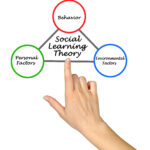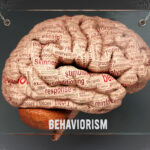Building Unshakeable Emotional Resilience: Your Guide to Thriving Through Adversity
Adversity is an undeniable and universal aspect of the human journey. Life presents a multitude of challenges, from minor daily stressors to profound personal crises. While the nature of these difficulties varies, the capacity to navigate them effectively is crucial for well-being. This capacity is often referred to as emotional resilience.
The American Psychological Association (APA) defines resilience as “the process and outcome of successfully adapting to difficult or challenging life experiences, especially through mental, emotional, and behavioral flexibility and adjustment to external and internal demands”.1 It is not about being impervious to distress or avoiding hardship, but rather about the ability to adapt, recover, and even experience growth in the face of such experiences.3 This adaptability is not an inborn, fixed trait for a select few; rather, psychological research consistently demonstrates that the skills and resources underpinning resilience can be actively cultivated and practiced by anyone.1 Understanding resilience as a learnable skill shifts the perspective from a passive acceptance of one’s coping abilities to an active engagement in personal development. Moreover, resilience extends beyond merely “bouncing back” to a previous state; it can be a transformative process. Navigating adversity with resilience can lead to profound personal growth, including an enhanced capacity to relate to others, increased personal strength, a deeper sense of spirituality, and a greater appreciation for life.2 This article will explore the nature of adversity, delve into the significant benefits of emotional resilience, and provide actionable, evidence-based strategies to help individuals build this vital capacity.
Understanding Adversity: The Challenges We All Face
Adversity, in its essence, is a state of hardship, difficulty, or misfortune that individuals encounter throughout their lives.5 These challenges are not uniform; they can manifest as acute, short-term events, such as being denied a promotion or dealing with an unexpected injury, or they can be complex, long-term situations, like living in poverty or managing a chronic illness.6
It’s important to recognize that adversity is a pervasive element of life, experienced by everyone, though the degree and context may differ significantly.5 What one person perceives as a minor setback, another might experience as a significant challenge. This subjective nature of adversity underscores the universal need for resilience skills, applicable not just to major traumatic events but to the wide spectrum of life’s difficulties. Furthermore, encountering adversity, while inherently challenging, does not have to be an entirely negative experience. The process of navigating difficulties can become a catalyst for positive change, leading individuals to discover inner strengths, develop new coping mechanisms, and ultimately become stronger and more resilient.5
Adversity can be categorized into several common types, impacting various facets of an individual’s existence:
- Physical Adversity: This encompasses challenges related to bodily health and function. Examples include chronic illnesses, physical disabilities, significant injuries, or chronic pain.5
- Mental Adversity: This pertains to difficulties concerning mental health and cognitive abilities. It can involve diagnosed mental health conditions like depression or anxiety, learning disabilities, or issues with memory and concentration.5
- Emotional Adversity: This involves struggles with processing and managing emotions. Examples include experiencing grief, trauma, significant disappointment, rejection, or difficulties in emotional regulation.5
- Social Adversity: This relates to hardships encountered in interpersonal relationships and social interactions. It can manifest as bullying, social isolation, loneliness, family conflict, or difficulties in forming and maintaining relationships.5
- Financial Adversity: This category includes difficulties related to monetary resources and economic stability. Examples are job loss, poverty, significant debt, or ongoing financial insecurity.5
- Spiritual Adversity: Though perhaps less commonly discussed, this can involve a crisis of faith, an existential crisis, or a loss of meaning or purpose in life.5
The following table provides a quick guide to these common types of adversity:
| Type of Adversity | Brief Description | Example(s) |
| Physical | Challenges related to the body and physical health. | Chronic illness, serious injury, disability 5 |
| Mental | Difficulties concerning mental health and cognition. | Depression, anxiety, learning disability 5 |
| Emotional | Struggles with feelings and emotional regulation. | Grief, trauma, severe disappointment 5 |
| Social | Hardships in relationships and social interactions. | Bullying, loneliness, family conflict 5 |
| Financial | Difficulties related to monetary resources. | Job loss, significant debt, poverty 5 |
Recognizing the diverse forms adversity can take allows for a more tailored approach to building resilience, as different challenges may require different coping strategies and resources.
Why Emotional Resilience Matters: The Power of Bouncing Back (and Forward)
Emotional resilience is far more than simple toughness; it is a dynamic and vital component of overall mental health and well-being. Its importance is underscored by a wealth of psychological research highlighting its profound benefits in navigating life’s inevitable stressors and challenges.1 Developing resilience is not merely about enduring hardship, but about adapting in ways that preserve psychological health and foster growth.
The benefits of emotional resilience are multifaceted and deeply impactful:
- Improved Mental Health: Resilience acts as a significant protective factor against the development of various mental health conditions, including depression, anxiety disorders, and the detrimental effects of chronic stress and burnout.1 Research indicates that resilience and the use of adaptive coping skills are primary factors that shield individuals from both mental and physical illnesses when faced with adversity.2
- Effective Stress Management: Individuals with higher levels of emotional resilience are better equipped to manage stress. They tend to view challenges not as insurmountable barriers but as opportunities for growth, maintaining composure and problem-solving abilities even in high-pressure situations.7 This capacity is crucial, as unmanaged chronic stress can significantly impair both physical and mental health.7
- Enhanced Coping Mechanisms and Problem-Solving: The core of resilience lies in “mental, emotional, and behavioral flexibility”.1 This flexibility translates into more effective coping strategies and superior problem-solving skills. Resilient individuals often exhibit an enhanced internal locus of control, greater self-efficacy, and a more adept approach to resolving problems they encounter.2
- Greater Overall Well-being and Life Satisfaction: Emotional resilience is strongly correlated with increased happiness, greater life satisfaction, and the ability to find and derive meaning from life experiences, even challenging ones.2
- Potential for Post-Traumatic Growth: Beyond merely returning to a baseline level of functioning after a traumatic event, resilience can facilitate positive psychological change. This “post-traumatic growth” can manifest as increased personal strength, a deeper appreciation for life, improved interpersonal relationships, and new perspectives.2
- Improved Physical Health: The benefits of emotional resilience extend to physical health. By mitigating the harmful physiological effects of chronic stress, resilience can contribute to a reduced risk of developing stress-related physical illnesses, such as cardiovascular problems or a weakened immune system.2 This underscores the deep interconnection between emotional and physical health, where fostering one positively impacts the other.
- Success in Various Life Domains: The adaptability and perseverance characteristic of resilient individuals often translate into greater success across different areas of life. They are better positioned to achieve personal and professional goals, navigate career setbacks effectively, and thrive in a variety of life scenarios.8
Cultivating emotional resilience can be viewed as a proactive health strategy. Rather than simply reacting to crises, building resilience equips individuals with the tools to protect their mental and physical health preemptively.2 Fostering resilience, particularly from an early age, can serve as an effective preventative measure against the long-term negative impacts of trauma and severe stress.2
Core Pillars of Emotional Resilience: What Makes Us Strong?
Emotional resilience is not a monolithic trait but rather a complex construct built upon several interconnected factors. These factors span internal psychological and biological characteristics, as well as external social and environmental supports.1 Understanding these pillars provides a framework for identifying areas where resilience can be strengthened.
The primary contributing factors to emotional resilience can be broadly categorized:
- Internal Factors:
- Ways of Viewing and Engaging with the World: This is a significant component and includes an individual’s mindset, levels of optimism, and hope. Cognitive flexibility—the ability to adapt thinking patterns to new situations—is crucial, as is a positive self-view, robust problem-solving skills, and the capacity for effective emotional regulation.1 These psychological attributes largely determine how an individual perceives and responds to adversity.
- Biological and Neurobiological Elements: While the focus of this article is on buildable skills, it is acknowledged that biological factors play a role. These can include genetic predispositions and the functioning of the body’s stress response systems, such as the hypothalamic-pituitary-adrenal (HPA) axis and the balance of certain hormones like DHEA-S and cortisol.2 These elements can influence an individual’s baseline reactivity to stress.
- External Factors:
- Availability and Quality of Social Resources: Strong social support networks are consistently identified as a cornerstone of resilience. This includes secure attachments with caregivers, supportive relationships with family and friends, and broader community support systems.1 The quality of these relationships is often more important than the sheer number.
- Specific Coping Strategies: The repertoire of coping strategies an individual employs when faced with challenges is critical. Resilience is associated with action-oriented approaches, the ability to learn from past experiences, and the flexible application of different coping mechanisms depending on the situation.1
These internal and external factors do not operate in isolation; they interact dynamically. For instance, a supportive community environment (an external factor) can foster individual self-efficacy and optimism (internal factors).10 Similarly, an individual’s inherent problem-solving skills can help them to build stronger social networks. This bio-psycho-social nature of resilience means that efforts to enhance it are most effective when they address multiple domains.
Furthermore, resilience is not a static state but a dynamic and context-dependent process.2 An individual might exhibit strong resilience in a professional setting but find it more challenging to maintain in personal relationships, or vice versa.3 Resilience can also fluctuate over time, influenced by current life circumstances, available resources, and ongoing personal development.2 This dynamic quality means that building resilience is an ongoing journey of adaptation and growth, rather than the achievement of a fixed endpoint.
Actionable Strategies to Build Your Emotional Resilience
The capacity for emotional resilience is not predetermined; it can be intentionally developed and strengthened through consistent effort and the application of practical, evidence-based strategies. These strategies address the various pillars of resilience, from internal thought patterns to external support systems and lifestyle choices.
(A) Cultivating a Resilient Mindset
The way individuals perceive and interpret events significantly influences their emotional responses and ability to cope. A resilient mindset is characterized by optimism, constructive self-talk, and the ability to manage negative thoughts effectively.
- The Power of Perspective: Optimism, Hope, and Positive Self-Talk
An optimistic outlook and a sense of hope can serve as powerful buffers against stress and despair.1 This doesn’t mean ignoring difficulties but rather maintaining a belief in one’s ability to cope and in the possibility of positive outcomes. Positive self-talk involves consciously challenging negative internal dialogues and replacing them with more balanced and affirming statements.6 A practical technique is to “shift into neutral” when stress arises, acknowledging the situation without immediately jumping to worst-case scenarios, and reminding oneself, “Whatever it is, I can deal with it”.11 Creating personal mantras, such as “this too shall pass” or “I’ve got this,” can also anchor a positive attitude.11 - Cognitive Restructuring: Identifying and Challenging Negative Thoughts
Cognitive restructuring is a well-established technique for identifying, challenging, and modifying unhelpful or distorted thought patterns that contribute to distress.7 This process typically involves:
- Identifying triggers and automatic negative thoughts (ANTs): Keeping a thought journal can help individuals become aware of situations that trigger stress and the immediate negative thoughts that arise.12
- Examining the evidence: This involves critically evaluating negative thoughts using Socratic questioning, asking, for example, “Is this thought based on facts or on my feelings?” “What evidence supports this thought, and what evidence contradicts it?”.12
- Challenging and reframing: The goal is to develop more balanced, realistic, and constructive alternative thoughts.6 This includes avoiding cognitive distortions like “all-or-nothing” thinking, which views situations in extreme, black-or-white terms.14 It’s important to understand that cognitive restructuring aims for realistic thinking, not just an artificial imposition of positivity. By examining thoughts critically, individuals can differentiate between rational concerns and exaggerated fears, leading to more adaptive emotional and behavioral responses.
- Practicing Self-Compassion
Self-compassion involves extending the same kindness, understanding, and support to oneself during times of stress or failure that one would offer to a good friend.15 Research suggests it is more effective for motivation and resilience than self-criticism.14 Dr. Kristin Neff identifies three core components of self-compassion 15:
- Self-Kindness: Being gentle, patient, and understanding with oneself, rather than harshly judgmental or self-critical.
- Common Humanity: Recognizing that suffering, imperfection, and making mistakes are universal aspects of the human experience, rather than isolating personal failings.
- Mindfulness (in the context of self-compassion): Observing one’s negative thoughts and emotions with openness and clarity, without suppressing them or becoming overly identified with them. Actionable practices include taking a “self-compassion break” by acknowledging pain, remembering common humanity, and offering oneself kindness.15 Affect labeling, or “naming to tame” emotions, can also be helpful.15 These mindset strategies are often synergistic. For instance, self-compassion can create a safer internal environment to acknowledge and challenge negative thoughts during cognitive restructuring, while an optimistic outlook can provide the motivation to engage in these practices.
(B) Nurturing Connections and Support
Strong social connections are a critical buffer against stress and a significant factor in fostering resilience.
- Building and Maintaining Strong Social Networks
The availability and quality of social support from family, friends, and colleagues play a vital role in how individuals navigate adversity.1 Strategies for strengthening these networks include:
- Actively cultivating and investing time in relationships.4
- Reaching out strategically, recognizing that different people may offer different kinds of support (e.g., some are good listeners, others offer practical help).7
- Understanding that giving support can be as beneficial as receiving it, fostering a sense of purpose and positive emotion.7
- Practicing good communication and conflict resolution skills to maintain healthy relationships.19 The emphasis should be on the quality and reciprocity of these connections, as one-sided or draining relationships can sometimes increase stress.7
- The Role of Community
Beyond close individual relationships, a sense of belonging to a wider community can provide security and support.2 Engaging in community activities or groups can foster this sense of connection and shared identity.
(C) Developing Healthy Coping Mechanisms
Resilient individuals typically possess a flexible toolkit of coping strategies they can deploy as needed.
- Mindfulness and Meditation Practices
Mindfulness involves paying attention to the present moment intentionally and non-judgmentally.7 Regular practice can reduce stress, enhance emotional regulation, improve focus, and even lead to positive changes in brain regions associated with stress.7 Simple techniques include:
- Deep breathing exercises (e.g., 4-7-8 breathing, box breathing).11
- Body scan meditations.20
- Focusing on the breath.7
- Utilizing mindfulness apps for guided practice.24
- Effective Problem-Solving Skills
Resilience often involves an action-oriented approach to addressing challenges rather than avoidance.4 Key steps in problem-solving include:
- Clearly identifying the problem.
- Breaking it down into smaller, more manageable steps.24
- Brainstorming potential solutions.
- Developing a realistic plan of action and implementing it.4
- Emotional Regulation Techniques
This refers to the ability to manage and respond to emotional experiences in a healthy and constructive manner.4 Techniques include:
- Recognizing and accurately labeling emotions (e.g., “name it to tame it”).15
- Understanding personal emotional triggers.11
- Creating a designated “worry window” to confine anxious thoughts to a specific time.14
- Engaging in attention-shifting activities to interrupt rumination.14 Developing a diverse array of such coping skills allows individuals to adapt their responses flexibly to different types of stressors.3
(D) Prioritizing Physical Well-being
The mind and body are inextricably linked, and physical health forms a crucial foundation for emotional resilience.25
- The Mind-Body Connection: Exercise, Nutrition, and Sleep
- Exercise: Regular physical activity releases endorphins, reduces stress hormones, improves mood, and has neuroprotective effects.2 Even moderate activities like a brisk 30-minute walk can be beneficial.7 Exercise can stimulate the growth of new neurons and improve blood flow in the brain, enhancing cognitive function and emotional regulation.26
- Nutrition: A balanced and nutritious diet provides the physical energy needed to cope with challenges and supports overall brain health.2 It is also advisable to avoid using substances like alcohol or drugs as a way to dampen the stress response, as these do not address the root cause and can have negative health consequences.7
- Sleep: Adequate, quality sleep is essential for stress management, emotional regulation, and cognitive function.7 Chronic sleep deprivation can increase cortisol levels and impair the ability to cope with stress.14 Protecting sleep through good sleep hygiene practices is vital. These physical self-care practices are not luxuries but fundamental components of building and maintaining emotional resilience, directly influencing psychological coping capacity.
(E) Finding Meaning and Purpose
A sense of meaning and purpose can provide an anchor during difficult times and fuel motivation to persevere.
- Setting Realistic and Meaningful Goals
Setting and working towards goals can provide a sense of direction, accomplishment, and control, thereby boosting self-esteem and resilience.8 It is often helpful to use the SMART framework (Specific, Measurable, Attainable, Relevant, Time-bound) to define these goals.14 Focusing on goals that are personally meaningful and aligned with one’s core values enhances their motivational power.28 - Connecting with Personal Values and Purpose
A strong sense of purpose is a significant contributor to resilience.4 This can be cultivated by:
- Engaging regularly in activities that are personally meaningful.19
- Practicing altruism or helping others, which can foster a sense of purpose and connection.4 When facing adversity, a clear “why” rooted in one’s values and purpose can make it easier to endure the “how” of navigating difficult circumstances.
The following table offers a glance at key strategies and simple actions to begin building emotional resilience:
| Resilience Strategy | Core Principle | Simple Action to Start Today |
| Cultivate Positive Perspective | Focus on hope, optimism, and constructive self-talk. | Write down 3 things for which gratitude is felt.19 |
| Cognitive Restructuring | Challenge and reframe negative thoughts realistically. | Question one automatic negative thought: “Is it 100% true?”.13 |
| Practice Self-Compassion | Treat oneself with kindness during hardship. | Place a hand on the heart and say, “This is a tough moment”.15 |
| Nurture Social Connections | Build and maintain supportive relationships. | Reach out to one friend or family member.7 |
| Practice Mindfulness | Stay present and aware without judgment. | Take 5 deep, mindful breaths.7 |
| Develop Problem-Solving Skills | Approach challenges with an action-oriented plan. | Break down one current challenge into smaller steps.24 |
| Regulate Emotions | Manage feelings constructively. | Label an emotion being felt right now.15 |
| Prioritize Physical Health | Support mind-body connection (exercise, diet, sleep). | Go for a 10-minute walk.7 |
| Set Meaningful Goals | Create direction and purpose. | Identify one small, achievable goal for the week.28 |
Resilience in Action: Stories of Overcoming
While strategies provide a roadmap, observing resilience in practice can be profoundly illustrative. Ethically sourced stories highlight how individuals navigate diverse adversities by employing many of the principles discussed. For example, Jackie O’Brien’s journey through multiple severe health crises, including a stroke and septic shock, demonstrates immense resilience supported by dedicated healthcare teams and her own determination to regain mobility and independence.30 Her story underscores the importance of social support (from family and professionals) and persistent effort in rehabilitation.
Similarly, narratives from individuals facing mental health challenges reveal common threads of resilience. Jessie, who struggled with depression, anxiety, and substance abuse in a cultural context where mental health was stigmatized, found strength in creative expression and sharing her story to raise awareness.31 Linda, diagnosed with schizoaffective disorder, discovered a new path through art therapy.31 Tera, after a severe manic episode, recognized her need for help and found self-worth in accepting support, embodying the idea that reaching out is a strength.31 These accounts, whether of overcoming physical ailments or mental health struggles, often emphasize the role of support systems, professional help, finding meaning, and the gradual process of recovery and adaptation.30 The power of these stories lies in their relatability; they show that resilience is not an abstract concept but a lived experience, achievable through perseverance and the application of adaptive strategies.
When to Seek Professional Support
While self-help strategies are powerful tools for building emotional resilience, there are times when the challenges faced may feel overwhelming or when these strategies alone are not sufficient. Recognizing when to seek professional support is, in itself, a sign of strength and an important aspect of self-care.
It may be time to seek help from a mental health professional, such as a therapist, counselor, or psychologist, if an individual experiences 5:
- Persistent feelings of sadness, anxiety, hopelessness, or being overwhelmed that do not improve over time.
- Significant difficulty functioning in daily life, including work, school, or relationships.
- A sense that personal resilience strategies are not making enough of a difference.
- Recurrent thoughts of death or self-harm.
- A desire for guided support in developing coping mechanisms or processing difficult experiences.
Therapy can provide a safe and supportive space to explore challenges, develop tailored coping skills (such as cognitive restructuring or emotion regulation techniques), and gain new perspectives.12 Seeking professional help should not be viewed as a failure of personal resilience but rather as a proactive and empowering step towards enhancing it. Mental health professionals are trained to help individuals navigate adversity and build the very skills that contribute to long-term emotional well-being.
Conclusion: Your Journey to a More Resilient You
Emotional resilience is a dynamic and learnable process of adapting well in the face of adversity, trauma, and significant stress.1 It is not about avoiding life’s difficulties but about navigating them with flexibility, strength, and a capacity for growth. Building this resilience involves a multifaceted approach that encompasses cultivating a resilient mindset, nurturing supportive connections, developing healthy coping mechanisms, prioritizing physical well-being, and finding meaning and purpose in life.2
The journey to becoming more emotionally resilient is ongoing and deeply personal. It requires patience, persistence, and self-compassion. The strategies outlined in this article offer a scientifically grounded toolkit, but the true power lies in their consistent application. Each small step taken to challenge a negative thought, reach out for support, practice mindfulness, or engage in self-care contributes to a stronger foundation of resilience.
It is important to remember that resilience is not about achieving a permanent state of invulnerability; rather, it is about enhancing the ability to manage and recover from challenges as they arise throughout life. This ongoing practice of adapting and growing is what ultimately allows individuals not just to survive adversity, but to thrive despite it.
Individuals are encouraged to select one or two strategies discussed and begin incorporating them into their daily lives. Sharing this information with others who might find it beneficial can also be a valuable step, fostering a wider culture of understanding and support for emotional well-being. The path to greater emotional resilience is an investment in a healthier, more fulfilling life, empowering individuals to meet the future with confidence and strength.
Works cited
- Resilience – American Psychological Association, accessed May 6, 2025, https://www.apa.org/topics/resilience
- Resilience by design: How nature, nurture, environment, and …, accessed May 6, 2025, https://pmc.ncbi.nlm.nih.gov/articles/PMC10251360/
- Resilience definitions, theory, and challenges: interdisciplinary …, accessed May 6, 2025, https://pmc.ncbi.nlm.nih.gov/articles/PMC4185134/
- Being Resilient in the Face of Adversity – NAPS.org, accessed May 6, 2025, https://naps.org/Post/Being-Resilient-in-the-Face-of-Adversity
- Types of Adversity in Addiction – Fort Behavioral Health, accessed May 6, 2025, https://fortbehavioral.com/addiction-recovery-blog/the-six-types-of-adversity/
- Overcoming Adversity: 9 Tips – Psych Central, accessed May 6, 2025, https://psychcentral.com/health/proven-ways-to-overcome-adversity
- Healthy ways to handle life’s stressors, accessed May 6, 2025, https://www.apa.org/topics/stress/tips
- The Power of Resilience: Nurturing Psychological Well-being, NYC – Integrative Psych, accessed May 6, 2025, https://www.integrative-psych.org/resources/the-power-of-resilience-nurturing-psychological-well-being
- Strengthening Emotional Resilience for Enhanced Workplace Well-Being, accessed May 6, 2025, https://therapygroupdc.com/therapist-dc-blog/strengthening-emotional-resilience-for-enhanced-workplace-well-being/
- Introduction to Resilience – The Psychology of Resilience – Eagle Pubs, accessed May 6, 2025, https://eaglepubs.erau.edu/psychologyofresilience/chapter/main-content-3/
- Build Resilience in 9 Simple Steps | NEA Member Benefits, accessed May 6, 2025, https://www.neamb.com/family-and-wellness/build-resilience-in-9-simple-steps
- Cognitive Restructuring for Stress Management | Therapy Trainings™, accessed May 6, 2025, https://www.therapytrainings.com/pages/blog/a-guide-to-cognitive-restructuring-for-effective-stress-management
- Cognitive Restructuring Techniques for Reframing Thoughts – Positive Psychology, accessed May 6, 2025, https://positivepsychology.com/cbt-cognitive-restructuring-cognitive-distortions/
- How to Break Free from Chronic Stress Patterns – Supportive Care, accessed May 6, 2025, https://www.thesupportivecare.com/blog/how-to-break-free-from-chronic-stress-patterns
- How to Practice Self-compassion for Resilience and Well-being …, accessed May 6, 2025, https://healthcare.utah.edu/integrative-health-wellness/resiliency-center/news/2021/02/how-practice-self-compassion-resilience
- Nurturing Resilience Through Self Compassion in Times of Change, accessed May 6, 2025, https://centerformsc.org/blogs/news/resilience-through-selfcompassion
- www.frontiersin.org, accessed May 6, 2025, https://www.frontiersin.org/journals/public-health/articles/10.3389/fpubh.2024.1331813/full#:~:text=Social%20support%20can%20alleviate%20the,affects%20psychological%20resilience%20in%20youth.
- Impact of social support on the resilience of youth: mediating effects of coping styles, accessed May 6, 2025, https://www.frontiersin.org/journals/public-health/articles/10.3389/fpubh.2024.1331813/full
- Resilience Examples: What Key Skills Make You Resilient?, accessed May 6, 2025, https://positivepsychology.com/resilience-skills/
- Break the Cycle: Managing Stress and Prioritizing Mental Health | Psychology Today, accessed May 6, 2025, https://www.psychologytoday.com/us/blog/revolutionizing-addiction-recovery/202411/break-the-cycle-managing-stress-prioritizing-mental
- Building Resilience, Practicing Mindfulness, and Cultivating Emotional Agility for Enhanced Well-Being and Positive Relationships in Challenging Times – ResearchGate, accessed May 6, 2025, https://www.researchgate.net/publication/384443499_Building_Resilience_Practicing_Mindfulness_and_Cultivating_Emotional_Agility_for_Enhanced_Well-Being_and_Positive_Relationships_in_Challenging_Times
- pmc.ncbi.nlm.nih.gov, accessed May 6, 2025, https://pmc.ncbi.nlm.nih.gov/articles/PMC9811678/#:~:text=Research%20model&text=Those%20who%20engage%20in%20any,resulting%20from%20the%20challenging%20environment.
- 14 Stress Management Techniques to Support Your Day-to-Day Routine, accessed May 6, 2025, https://careerservices.fas.harvard.edu/blog/2025/05/01/14-stress-management-techniques-to-support-your-day-to-day-routine/
- Stress Awareness Month: Understanding and Managing Stress in Youth, accessed May 6, 2025, https://www.westernyouthservices.org/stress-awareness-month-understanding-and-managing-stress-in-youth/
- Mental Health Awareness Month: Building Resilience and Emotional Well-Being, accessed May 6, 2025, https://comprehensivecounselinglcsw.com/mental-health-awareness-month-building-resilience-and-emotional-well-being/
- Stress-Defeating Effects of Exercise Traced to Emotional Brain Circuit, accessed May 6, 2025, https://www.nimh.nih.gov/news/science-updates/2011/stress-defeating-effects-of-exercise-traced-to-emotional-brain-circuit
- Mental Health in Lifestyle Medicine: A Call to Action – PMC, accessed May 6, 2025, https://pmc.ncbi.nlm.nih.gov/articles/PMC8848112/
- 20 Emotional Goal Examples for 2025 – BetterUp, accessed May 6, 2025, https://www.betterup.com/blog/emotional-goals
- How Setting Goals Can Positively Impact Our Mental Health – AllDayMedicalCenter, accessed May 6, 2025, https://alldaymedicalcare.com/how-setting-goals-can-positively-impact-our-mental-health/
- A Journey of Resilience: Jackie O’Brien’s Story – Hutchinson Regional Healthcare System, accessed May 6, 2025, https://www.hutchregional.com/blog/a-journey-of-resilience-jackie-obriens-story/
- These are stories of resilience and portraits of strength – Sunnybrook Hospital, accessed May 6, 2025, https://sunnybrook.ca/content/?page=mental-health-resilience
- Resilience Through Written Stories – Aggie Mental Health – UC Davis, accessed May 6, 2025, https://mentalhealth.ucdavis.edu/resilience/testimonials





